Did You Know?
Did You Know?
Fun Facts About What’s In the Garden Center
I took a walk around the garden center today, taking photos of plants and products in stock that have a story behind them. Here are a few things that I found, and what’s interesting about them.
Did you know…
Insects are attracted to the color yellow. Why? Because they perceive it as some sort of “super foliage.” Since leaves are green, and green is made up of the combination of yellow and blue, insects view yellow as being an attractive, souped-up type of foliage. You might notice that a child’s yellow plastic toy might gather a variety of bugs on it when it’s been left outside, for example. The color of these cards attract indoor insects that get trapped on the very sticky surface. Yellow sticky traps are sometimes used outdoor to monitor when certain insects have hatched, but they are most effective for the control of unwanted pests indoors.
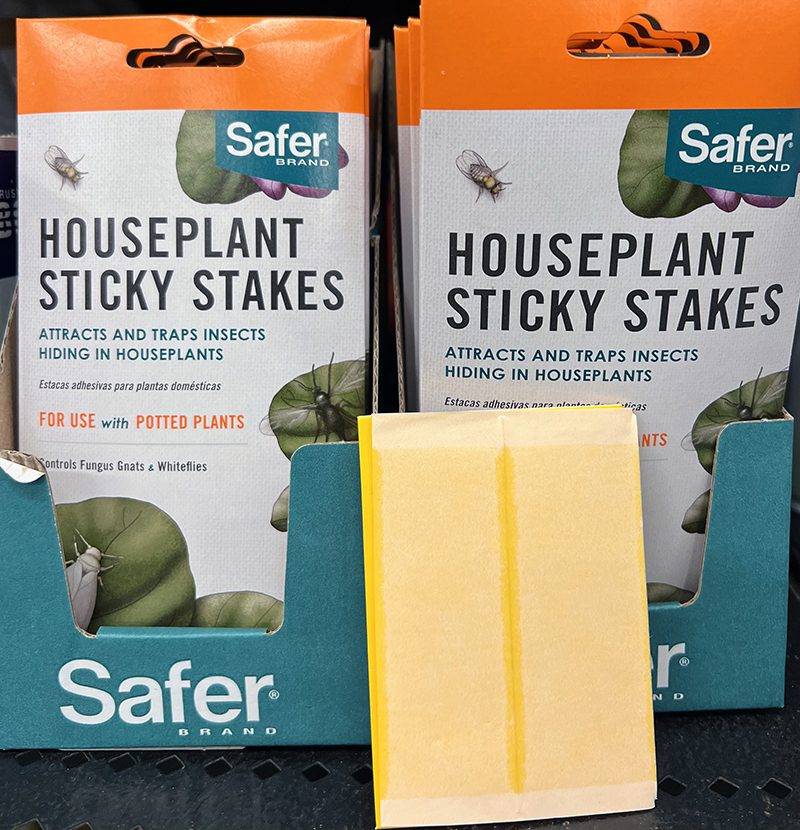
Some seeds germinate best in light, others in darkness. Looking at the seed rack, I noticed that two types of flowers next to each other. The Verbena bonariensis seeds are a good one to plant in flats or pots placed outside in February because when they go through a chilling period they sprout more quickly. But they are also seeds that germinate best when they have some light, so it’s best to sprinkle them right on top of the seed starting mix or potting soil, and just press lightly onto the surface. While outside you might want to cover the containers with an old pillowcase or some floating row cover (we stock the brand called Harvest Guard) to keep curious critters from digging in them. But once you are wanting the seeds to sprout, pull any covering off and either leave outdoors in the sun, or bring them inside into a sunny window or under lights.
Unlike the Verbena, Violas sprout better when in darkness. Cover the seeds with a light layer of damp soil, and cover the flat or containers with a sheet of cardboard. Check for germination every day, and once you see small plants, remove the cardboard and expose those seedlings to light.

Your moth orchid might produce new flowers from old stems. Phalaenopsis, commonly called moth orchids, are in bloom for a long time, but at some point those flowers fade and fall away. If the older stems don’t dry up, they often produce a new spike of flowers from the nodes. Keep up the watering routine you used when the plant was in bloom. If the top of the old stem looks dried, clip it off, but if the rest of the stem is a dark green, leave it on the plant and watch the nodes (marked on the photo below) for signs of new bloom spikes.
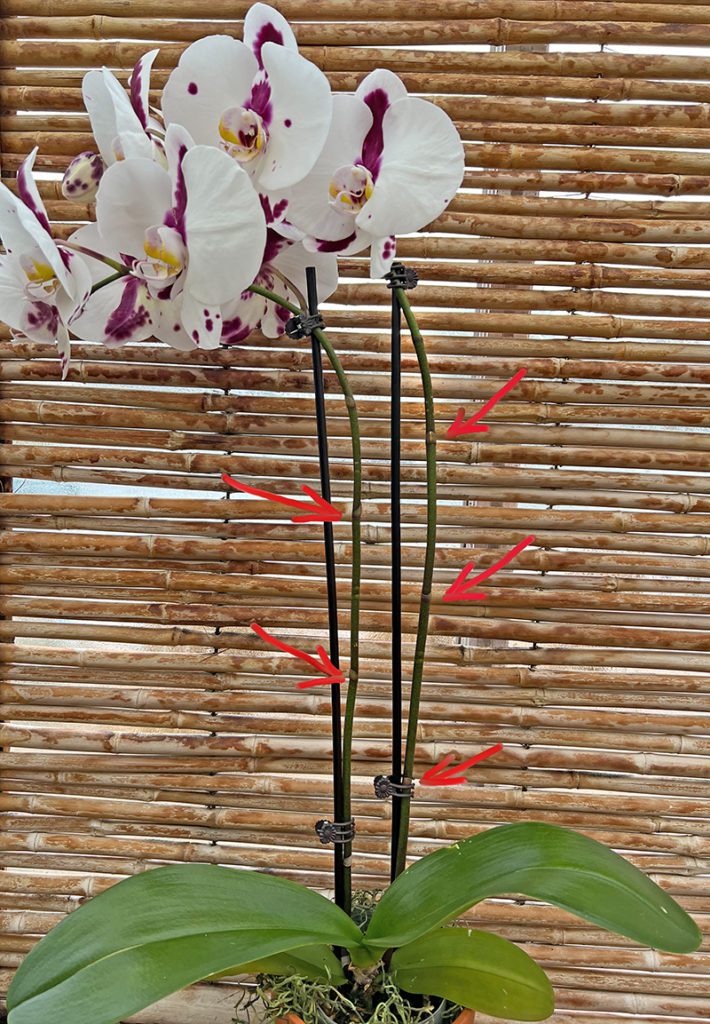
Combining two annual vines is both attractive and smart. As I looked at the rack of seeds today, I saw that we have some pretty varieties of sweet peas (Lathyrus odoratus). These old-fashioned, annual vines are beautiful, and many of them are fragrant, but they don’t flower all summer in our area. Sweet peas do best in cool weather, which is why in some parts of the country they are grown as winter annuals. In the Northeast, sweet peas should be grown as an early-summer flowering annual, similar to pansies. So it’s smart to combine them with other varieties of annual vines that flower through the entire summer. Cypress vine (Ipomoea quamoclit) is easy to grow from seed and has fine, ferny foliage. It’s also a favorite of hummingbirds, so be sure to grow some on a support near your patio or deck where you’ll enjoy the birds all summer.
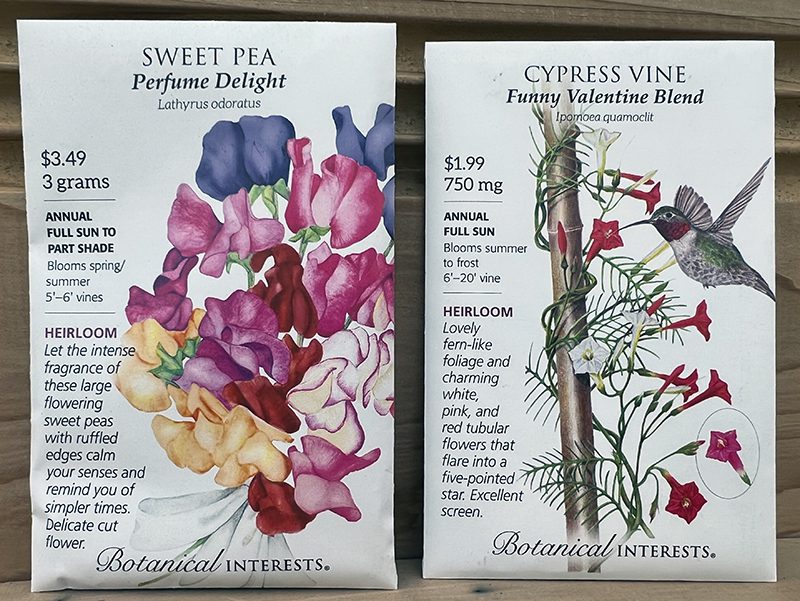
When growing citrus plants indoors, you will need to “be the bees.” Many people enjoy growing lemons, limes and other citrus indoors. These plants often flower in the winter when you have them inside, and when those flowers are fertile you’ll need to be sure that they are pollinated in order for the fruit to form. You can do this by taking a small, soft paint brush and traveling from flower to flower, moving the pollen from the stamens to the top of the pistil. In most plants that stamens circle the pistil. You can use your paintbrush to move pollen onto the top of the pistil on the same flower, or move from one flower that’s open to the next. Check the plant daily when the flowers are opening, and hand pollinate a number of the blooms as they open.

Frequent sowing of some seeds extends the harvest for months. There are some vegetables that get planted once at the beginning of the summer, but others can be repeatedly sown in order to vastly increase the amount of food you produce. Why is this important in January? Because purchasing the seeds now is smart if you want to be sure to grow specific varieties through the summer. (Some varieties of seeds sell out later in the season.) Should you purchase extra seed now, just store it in a plastic container indoors, away from heat vents, until you’re ready to plant.

Some plants develop flowers when the days are long, while others come into bloom when the days are short. We humans often wish that all plants should flower all the time, but the truth is that often plants flower in response to certain conditions. For many varieties of plants, the length of the hours of darkness is what stimulates them to come into bloom. This is called photoperiodism. There are short day (SD) plants that require less than 12 hours of light and more than 12 hours of darkness in order to flower. Long day (LD) plants need 12 or more hours of daylight and less than 12 hours of darkness in order to bloom. And day neutral (DN) don’t care about the hours of light or darkness; DN plants are often triggered into blooming by other things such their age or the temperature of the soil.
Why is this important? Because if you want flowers your houseplants all year you’ll need to be sure you have some short day, some long day and some day neutral varieties. And knowing that a particular plant only flowers in response to certain number of hours of light will help you understand why one of your plants only blooms in a particular season.
Another fun fact about photoperiodism: For many plants, it’s the length of the dark period that’s most important, not the light. That SD plant that comes into flower in response to long nights will not bloom if you give it too much light. So a Christmas cactus, a SD plant, won’t flower if you have it in a room where the lights are on past sundown. The interesting thing is, however, that if a SD plant gets extra darkness in the middle of the day, that doesn’t hinder flowering. From this we know that it’s the length of the dark period that’s most important, not the length of the daylight.
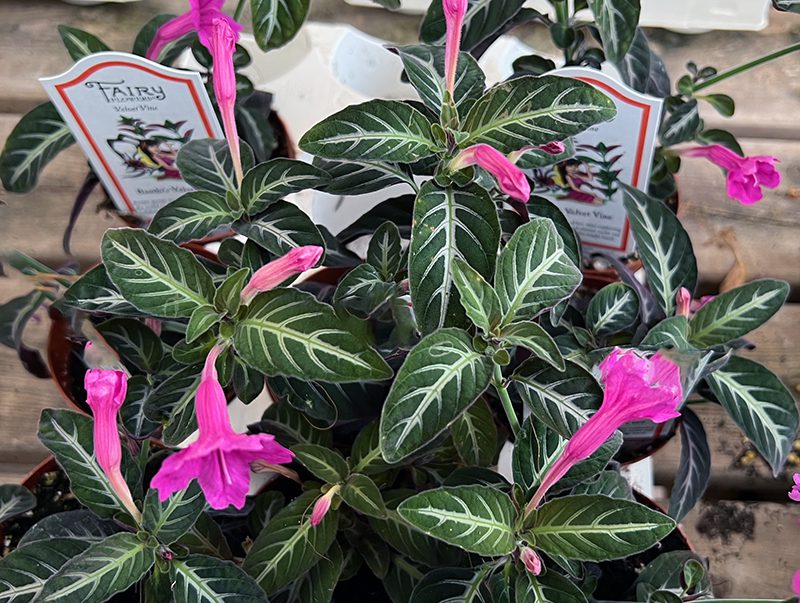
Did you know that Hyannis Country Garden has a Tiny Gardening Library? Located by the entrance into our enclosed patio, this tiny library has books about plants and gardening. Borrow a book, share a book! Use the winter to learn something new about plants and gardens.
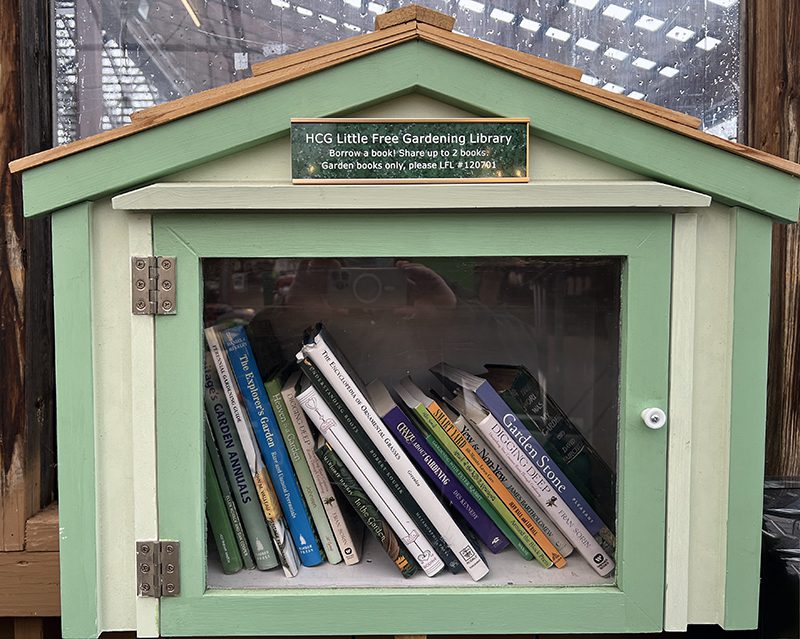
Subscribe To Our Newsletter
Sign up for our weekly email about sales and events.
